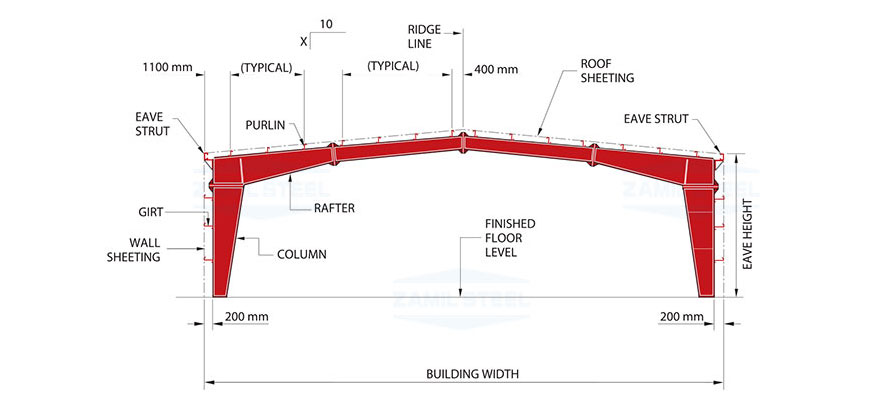Basic Building Parameters
The basic parameters that define a pre-engineered building are: Building width, Building length, Building height, Roof slope, End bay length, Interior bay length and Design loads.
No matter what primary framing system is used, the building width is defined as the distance from outside of eave strut of one sidewall to outside of eave strut of the opposite sidewall. Building width does not include the width of Lean-To buildings or roof extensions.
The longitudinal length of the building measured from out to out of end wall steel lines.
Building height is the eave height which usually is the distance from the bottom of the main frame column base plate to the top outer point of the eave strut. When columns are recessed or elevated from finished floor, eave height is the distance from finished floor level to top of eave strut.
This is the angle of the roof with respect to the horizontal. The most common roof slopes are 0.5/10 and 1/10. Any practical roof slope is possible.
The distance from outside of the outer flange of endwall columns to center line of the first interior frame column.
The distance between the center lines of two adjacent interior main frame columns. The most common bay lengths are 6 m, 7.5 m and 9 m.
Roof Live Load: 0.57 kN/m2
Design Wind Speed: 110 km/h
Design for snow loads, earth quake loads, collateral loads, crane loads or any other loading condition, if required must be specified at the time of request for quotation.
Loads are applied in accordance with the latest American codes and standards applicable to pre-engineered buildings unless otherwise requested at the time of request for quotation.


